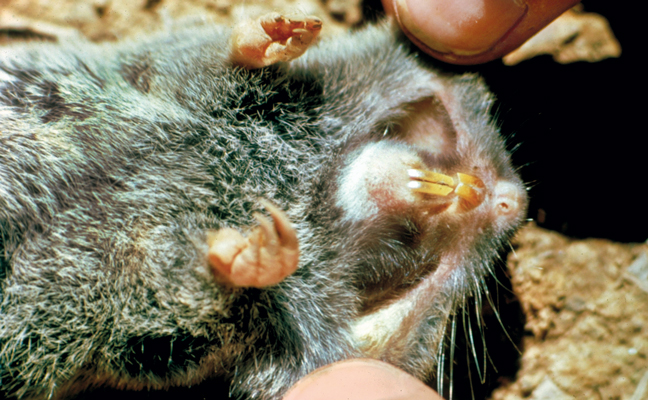
Note the cheek pockets of the northern pocket gopher, Thomomys talpoides. Photo: Dave Powell, USDA Forest Service (retired), Bugwood.org
Pocket gophers (Thomomys spp. and Geomys spp.) are burrowing, medium-sized rodents so named because they have fur-lined pouches outside of the mouth, one on each side of the face. These pockets, which are capable of being turned inside out, are used for carrying food. Their fur is fine and soft, and they range in color from nearly black to light brown to almost white.
Gophers, as they are also commonly known, are purpose-built for tunneling and living underground: They have powerful forequarters; short necks; and small, flat heads. Their forepaws contain large claws, which aid in digging burrows in lawns and gardens. Soil mounds from their digging are usually horseshoe-shaped around the burrow opening, whereas moles construct volcano-shaped mounds.
They are active year-round, but are most visibly active in the spring and fall, when the soil is of the ideal moisture for digging. Cut roots are usually stored in small chambers within the burrow, which can range in depth from a few inches to several feet.
These animals are solitary except when breeding or rearing young. Depending on the species, they will have one to two litters per year, each with three to four young. In late summer and early fall, young gophers disperse from the family unit to establish their own burrows and territories.
Source: Truman’s Scientific Guide to Pest Management Operations, Seventh Edition, available for purchase at MyPMP.net/shop.
Leave A Comment